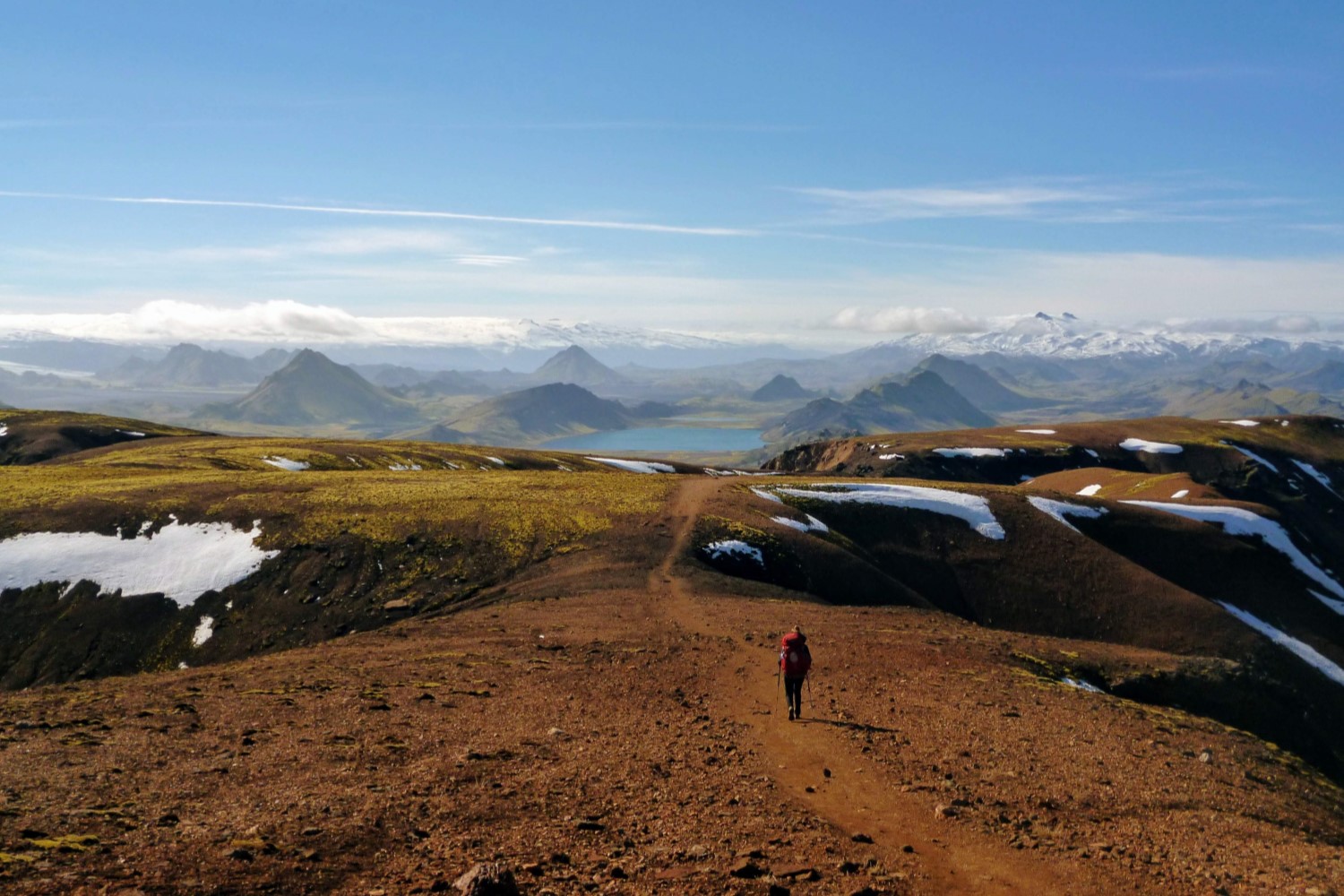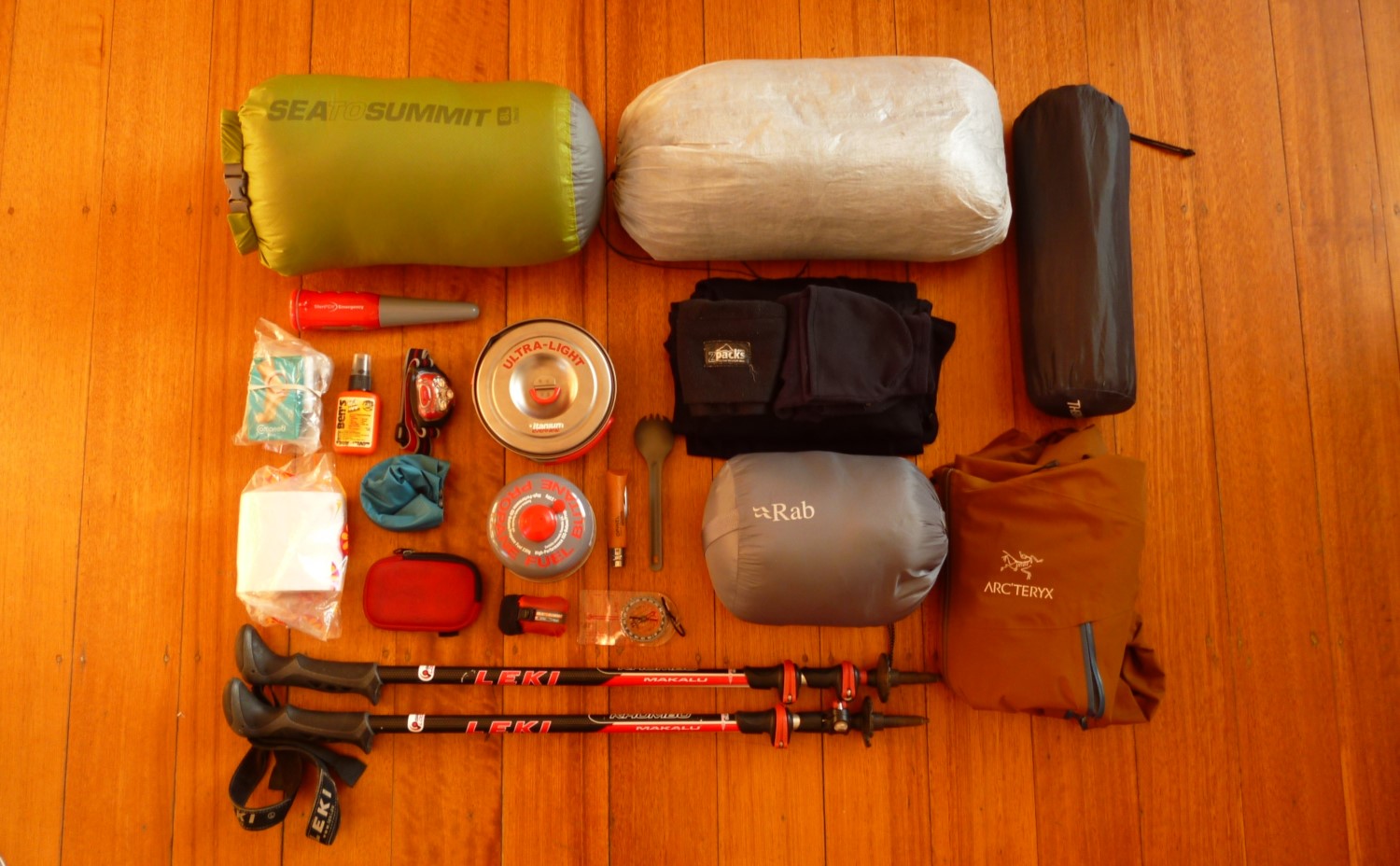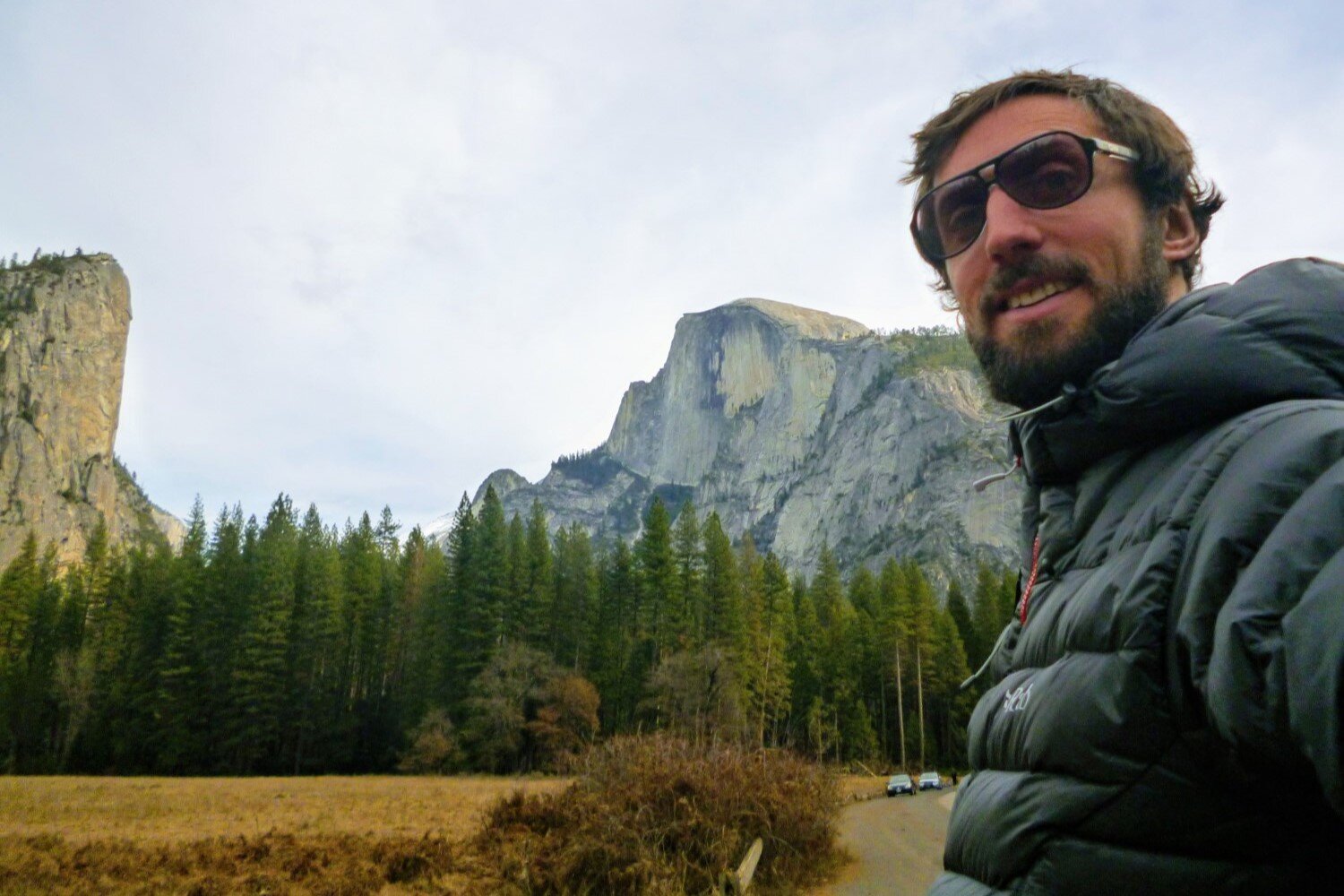UGQ Bandit Backpacking Quilt Review
JUMP TO: SPECS / PROS & CONS / INSULATION / FABRICS / FOOTBOX / BODY / COLLAR / ACCESSORIES / FINAL THOUGHTS
Author: Sam Brilleman
The UGQ Bandit is a high-quality ultralight backpacking quilt built in Michigan, USA. It is available in a range of down fill powers — 800, 850, and 950 — and with a whole host of optional add-ons and customizations.
The list of options when purchasing may be overwhelming for some — particularly those who haven’t slept in a backpacking quilt before. But UGQ do their best on their product pages to guide you through the options and answer some frequently asked questions.
The UGQ bandit can be used for ground or hammock sleeping… or just sitting around camp.
The Bandit can be used for ground or hammock sleeping, depending on the width you choose. In this review I look at a ground sleeping Bandit in detail, discussing a number of the add-ons you can get — many of which I deem worthwhile as they improve the comfort and performance.
Overall, I think the UGQ Bandit is amongst the best backpacking quilts on the market. It is thoughtfully designed, well built, and available with a huge list of customizations. Plus, it is pretty cost competitive relative to many other premium backpacking quilts.
QUICK SPECS
The weight specs are listed for the standard length, wide width, 20°F quilt with zippered footbox and no down overfill.
TEMP RATING: 20°F / -6°C (0°F, 10°F, 30°F and 40°F also available)
FILL TYPE: RDS certified DWR treated duck down
FILL POWER: 800 (850 and 950 also available)
FILL WEIGHT: 17.54 oz / 497 grams
TOTAL WEIGHT: 24.35 oz / 690 grams
CUSTOMISATION OPTIONS (additional cost): Three options for footbox style, Overstuffing — across entire quilt or specifically in the footbox, No taper, Draft collar, “Dynamic tension control”
INCLUDED ACCESSORIES: Non-waterproof stuff sack
OPTIONAL ACCESSORIES: Pad attachment kit ($3-5), Storage sack ($10)
PROS
Competitively priced ultralight backpacking quilt
Manufactured in the US to a very high standard
Heaps of customization options, including for example:
800 duck, 850 goose, or 950 goose down
Choice of either 10-denier or 20-denier shell fabric
Dynamic tension control — see our description in the review
Overstuffing
Draft collar
CONS
Customization options could be overwhelming for some people
Can be lead times of several weeks (usually depending on time of year)
INSULATION
FILL POWER: The UGQ Bandit is available in three variations of down fill. In order of increasing cost (and therefore warmth for weight) they are — 800 fill power duck down, 850 fill power goose down, and 950 fill power goose down.
The 800 fill power duck down allows UGQ to make the Bandit one of the most cost-competitive ultralight backpacking quilts on the market. Of course, their higher fill powers — 850 and 950 — offer better warmth-for-weight, i.e. you can get the same warmth from a lighter weight quilt, but it will come with a higher price tag.
For reference, the savings achieved by upgrading from 800 fill power to 950 fill power is about a 2-3 ounce saving on the total weight of the quilt (depending of the exact size and specs you choose). Plus, the higher fill power quilts will be slightly more packable.
The quality of down is measured by it’s “fill power” — higher fill power down offers the same warmth for less weight, but obviously comes with a higher price tag. PHOTO CREDIT: FEATHERED FRIENDS.
FILL WEIGHT, LOFT & OVERSTUFFING: The Bandit — like other quilts — is offered in a range of temperature ratings, each dialed in to a specific target “loft”. For a given fill power the target loft — e.g. 2.5 inches for their 20F quilts — is achieved using a certain quantity of down, known as the fill weight. If you choose a higher fill power then you need less fill weight to achieve the same loft and hence, achieve the same warmth for less weight.
At each temperature rating, UGQ offer optional “overstuffing” — in other words, additional down added to the fill weight. This can be an additional 1 or 2 ounces that is spread across the entire quilt, or an additional 1 ounce that is targeted specifically at the footbox.
Overstuffing is entirely optional, and obviously comes at an additional cost. But it can be worth considering — especially if you are cold sleeper. Adding the additional down can help you get the warmth you are expecting from the temperature rating you choose (…of course, you still need to be wary, since most sleeping bag and quilt manufacturers are massively over-optimistic of their temperature ratings).
Overstuffing can also help improve the performance of your quilt over time by preventing the loss of loft in the baffles — especially if you don’t plan on washing your quilt that often. Because let’s be honest, washing a quilt is a pain. But the lack of washing can reduce the loft of the down over time.
DUCK vs GOOSE: As mentioned, the 800 fill power version of the Bandit is made with duck down, as opposed to goose down. Duck down is less expensive to source, and so the use of duck down means the quilt can be manufactured at a lower cost.
Amongst premium ultralight backpacking quilts, duck down is less common. This is because geese have larger down plumes and therefore the highest fill power down is obtained exclusively from geese. But at slightly lower fill powers (e.g. 800 or less) there is little to differentiate goose and duck down, aside from cost. If you want to read more about the differences, then check out our article Goose Down vs Duck Down — WTF Is The Difference?
FABRICS
LINER: The UGQ Bandit use a 10-denier taffeta nylon for the inner liner, with a fabric weight of 0.66 oz / yd². A 10-denier fabric is basically the lightest liner material you will find used on quilts or sleeping bags. For comparison, our other favorite economy quilt — the Hammock Gear Economy Burrow — uses a 20-denier nylon taffeta, with a fabric weight of 1.1 oz / yd². However many other premium backpacking quilts do use 10-denier liner fabrics.
Even though the fabric is ultralight, you shouldn’t have any issues with down leakage. At least not that I’ve noticed with the quilt I’ve been testing.
SHELL: The Bandit is available in two main shell fabrics: a 20-denier ripstop nylon, or a 10-denier taffeta nylon. Choosing the lighter 10-denier fabric will add an additional $10 to the price tag.
Both fabrics are available in a range of colors. If you want a printed design, then they are available, but the printed fabrics come with a rather hefty additional $70 price tag, so you’d have to be pretty keen…
Both the 10-denier and 20-denier shell fabrics should do pretty well in terms of durability, but if you are concerned, then go with the 20d. From what I’ve seen, the 10-denier fabrics also appear to have a slightly “shinier” color, with the 20-denier being a bit more “matte-like” in its finish. The quilt shown in this review is built with the 10d.
DWR TREATMENT: All of the fabrics are treated with a durable water resistant (DWR) finish, to help prevent moisture getting through the fabrics and into the down. This isn’t the same as waterproofing, so you still need to be careful not to get your gear wet, but it nonetheless can help prevent things like condensation (e.g. dripping from the tent roof onto the quilt whilst sleeping) getting through to the insulation.
Of course, in truly damp or wet conditions you may want to provide additional moisture protection to the footbox and/or use a different sleeping bag with a heavier weave (and therefore truly water-resistant) shell.
FOOTBOX
As is the spirit of UGQ, there is no shortage of options when it comes to customizing your quilts footbox. The Bandit is offered in three styles for the footbox: zippered, boxed, or insulated.
Zippered footbox
A zippered footbox provides the most versatility, since your quilt can be laid open flat like a blanket in warmer weather. This is the option I usually opt for, and is the style that I had on the quilt I tested.
When the temps drop and you need the extra warmth, there is a short zipper that you do up. The zipper ends at about your mid calf, at which point there is a snap button that helps to take pressure off the closed zipper. At the bottom you have a drawcord to help cinch in the bottom of the footbox, and then a snap button over that to close out any remaining gaps in the base of the footbox.
The base of the footbox uses a snap to cover any remaining gap after the footbox has been cinched in.
It all works pretty well — sealing out almost any drafts, but obviously not quite as warm as a fully insulated footbox. It’s a pretty similar design to most other quilts — e.g. Hammock Gear, Enlightened Equipment, and others.
Some additional notes:
ZIPPER LENGTH: The zipper on my Bandit measured around 61 cm, which was slightly longer than my Hammock Gear Economy Burrow (56 cm) and Enlightened Equipment Revelation (52 cm), for example. The differences aren’t particularly noticeable in practice though.
DRAWSTRING CORD LOCKS: The drawstring for cinching the base of the footbox is pulled from the same side as the zipper itself (see photo below). This means there is two cord locks — one on each side of the zipper. Some brands opt for a single drawcord on the opposite side to the zipper. Each style has its pros — the same side as the zipper means everything is in the same place (on the underside of the quilt), whilst the opposite side to the zipper means one drawcord instead of two. The difference is pretty negligible though — it’s really up to you what you prefer.
FOOTBOX DRAFT TUBE: In late 2022 (after I reviewed this quilt) UGQ added the option to have a draft tube along the footbox zipper, to help better insulate the footbox.
This photo shows the base of the zippered footbox before it is cinched in. The Economy Burrow (left) has the drawstring on the opposite side to the footbox zipper (which is underneath) so there is one cordlock. Whereas the UGQ Bandit (right) has the drawstring on the same side as the zipper, and so there are two cord locks (one on each side of the zipper).
Boxed footbox
The boxed footbox is for those who don’t need to open their quilt up flat like a blanket — since with the boxed option, the footbox is sewn shut. This provides additional warmth, and a very minimal weight saving (about 0.25 ounces).
Although the boxed footbox doesn’t have any holes in the bottom like the zippered one, there will be some weak points in the insulation along the sewing lines. So, it’s not quite as warm as the insulated footbox.
Insulated footbox
If you need the absolute warmest option (e.g. you are buying a 0 degree temp quilt), then you may want to go with the insulated footbox. Like the boxed footbox, it won’t open up flat, so you do sacrifice some versatility. But the upside is that you gain warmth. Compared with the boxed option, the insulated footbox is warmer — it has less sewn lines, a rounder shape, and more insulation, meaning it will provide greater warmth than even the boxed sewn option.
The insulated footbox is pretty similar in style to a standard mummy sleeping bag. And to be honest, if you are pushing your quilt into temps that you need that style of footbox, then I’d wonder whether you even want a quilt at all. Below freezing, I tend to opt for a traditional sleeping bag (or hoodless sleeping bag) with a full length zipper to seal in warmth.
BODY
SECURING THE QUILT: Backpacking quilts are notable for being open on the underside — i.e. no full length zipper along the body. Of course, in colder weather you want to be able to keep the quilt wrapped around your body to seal out the cold.
For this purpose, the Bandit has three wafer clips sewn in along the length of the opening. In cold weather you secure these and the quilt stays wrapped around you, with still enough room around your shoulder and torso to sleep comfortably. The clips are pretty comfortable to sleep on top of too — I’ve never noticed an issue with them.
These wafer clips (that can used to secure the quilt around your body or attach it to the “deluxe” pad attachment kit) are both easy to use and unnoticeable when sleeping.
DYNAMIC TENSION CONTROL: UGQ are one of the smallish number of quilt manufacturers that offer so-called “dynamic tension control”. This is basically strands of elastic that run along the length of the opening on the quilt underside, each with a cord lock at the bottom (near the top of the footbox zipper). When you tension the elastic, the edges of the quilt pull in around your body. The strap and cord lock are a bit fiddly because the elastic is so stretchy, but you probably aren’t likely to adjust it much during the night.
You’ll want to play around with the amount of tension you use, since too much tension can defeat one of the main benefits of a quilt — the reduced constriction. But a bit of tension can be really handy when trying to prevent drafts.
Again, it is an optional customization with a small price tag attached, so you have to decide what is important to you. But personally I think it’s a worthy addition.
A comparison of the dynamic tension control when untensioned (left) and slightly tensioned (right).
PAD ATTACHMENT: Some people prefer to secure the quilt to their sleeping pad, rather than directly around their body. This can help keep your quilt in place during the night, and help prevent drafts in colder weather.
I opt for a pad attachment system in cold temps, but in warmer temps I prefer the simplicity of going without one. For UGQ quilts the pad attachment kit is an accessory that costs extra, but for just a few extra dollars it is worth including one in your purchase so you have the option to use it in the future.
UGQ offer two styles of pad attachment. The first they refer to as “Ultralight” and it uses a toggle to attach to the edge of the quilt. The second they refer to as “Deluxe” and it uses the flat wafer clip to attach to the edge of the quilt. I only have experience with the flat wafer clips, and my guess is these are much easier to work with than the toggles. But, if you are looking to shave every last ounce, then maybe the toggles are worth a look. It’s worth pointing out that every quilt supports both pad attachment kits, and both styles attach at the same location along the length of the quilt.
TAPERED vs RECTANGULAR: UGQ allow the option for your quilt to be tapered at the lower end, or not tapered (i.e. rectangular). Personally I prefer to opt for tapered — similar to a mummy style sleeping bag. But, if you are a particularly active sleeper that hates being constricted, or you plan to regularly open your quilt flat and prefer extra coverage, then you may want to forgo the tapering.
The downside of no tapering is a bit of extra weight and cost (due to the additional down required) and a slight reduction in thermal efficiency (due to the extra volume inside when closed up).
COLLAR
SECURING THE COLLAR: At the time of originally writing this review, the collar of the quilt was secured by two flat snap closures. But as of late 2022, this has been updated to a buckle closure.
The collar used to be secured using two snaps positioned just below the drawstring cord locks (as shown), but as of late 2022 is now secured using a buckle (not shown).
CINCHING THE COLLAR: Once the collar is secured, there is a drawcord that can be used to cinch it in. A cool feature is that the drawcord has cord locks on the same side as the snap closure and on the opposite side to the snap closure. This means that you should be able to cinch the collar with your hands in front of you regardless of whether you are a front or back sleeper.
OPTIONAL DRAFT COLLAR: Another optional customization, a draft collar can be included for an extra $15. I prefer a draft collar since it makes the collar cozier when cinched in, and helps retain heat in cold weather.
Here you can see the cozy draft collar puffing up above the neckline, as well as cord locks for the neck line drawstring on both sides of the quilt (i.e. the underside where the quilt opening is, and the topside).
ACCESSORIES
STUFF SACK (INCLUDED): UGQ ship the Bandit with a silpoly stuff sack with a drawstring top. I usually don’t end using these types of non-waterproof stuff sacks. Instead I’d suggest using a waterproof dry sack with a roll top closure to store your quilt when backpacking, even if you are using a pack liner or waterproof backpack. This helps to ensure your quilt stays dry, even during a severe rainstorm.
Each Bandit comes with a basic drawstring stuff sack.
STORAGE SACK ($10): For an extra charge, you can get a storage sack with your quilt. To be honest, I would prefer if the storage sack was just included and the stuff sack was optional, since a non-waterproof stuff sack is limited in its usability (depending on your packing style, of course).
The storage sack is a large breathable drawstring bag that your quilt can be stored in whilst not in use — large means the down isn’t compressed during storage, and breathable means moisture can escape. Compressing goose down for long periods while in storage is bad news for the longevity of the down, so using a storage sack will help prolong the life of your quilt.
PAD ATTACHMENT KIT ($3-5): As mentioned above, UGQ sells pad attachment kits that allow you to keep the quilt secured to your sleeping pad. They have an “ultralight” and a “deluxe” version, although I’d say the naming is somewhat of a misnomer — both are pretty light, and neither are particularly deluxe. Basically, the “ultralight” uses shock cord and toggles, whilst the “deluxe” uses elastic strap and wafer clips.
I’d imagine that the wafer clips are easier to use, but I’ve not actually tested the toggles. It’s a bit down to personal preference, but having some form of pad attachment kit can be handy in colder weather. If you want one, then you’ll need to select it during your order. And it’s worth noting that each “kit” only has one strap — so you might want to add a couple to your order.
FINAL THOUGHTS
The UGQ Bandit is a backpacking quilt that does pretty much everything right. It is built from quality materials, designed with attention to detail, and manufactured to a high standard in their US-based factory.
At the lower end of the price range, a UGQ Bandit with 800 fill power down and no customizations or add-ons will set you back around US $300, which represents solid value for money in the scheme of things. Better yet, the ability to customize your quilt and choose from a range of down fill powers, means you can spend less or more depending on your needs and budget.
And with customizations that include everything from draft collars to dynamic tension control, and from storage sacks to 20+ color options, they’ve basically included all the features and accessories you might hope to find elsewhere in the industry.
The backpacking quilt market is a pretty tight one at the moment, with a number of manufacturers making awesome quilts — and sometimes there isn’t too much to differentiate between the best. But without a doubt the UGQ Bandit is amongst those top picks, and so should be on your radar.
DISCLOSURE
UGQ provided me with a free sample of the Bandit for this review — but the views expressed here are all my own. This review does also contain affiliate links.
MORE INFORMATION
If you loved this gear review article, then you'll likely love traversing some of our other hiking and backpacking content:
Or check out our entire list of Gear Reviews, Knowledge Base Articles, or Destination Guides for more hiking, backpacking, and outdoors related content.




















